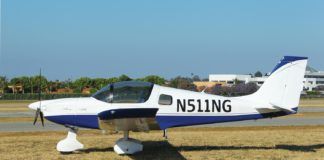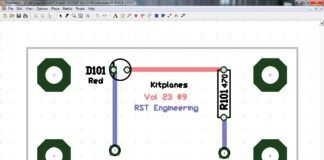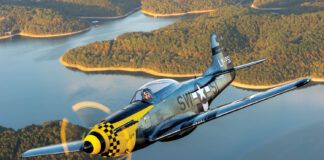Supposedly, there are two basic types of us out there. Builder and fliers. There are craftsmen in our league who wont rest until every rivet is uniformly driven, precisely countersunk-perfect. Down the hangar row you might find a dusty soul with a longboard and a garbage can rim-full of sandpaper who is compulsive about contours. If you’re one of this unique breed, I salute you and admire your work.
Most days, a 30 change of sightline from this computer monitor shows me not the side of a cubicle-thank goodness-but the tail end of my inevitably dirty airplane. It is, at this moment and probably at any time you care to ask, bug spattered, slightly too dusty, and, it always seems, just about ready for an oil change. It is not, by any stretch of the imagination, a showpiece, polished to perfection like the airplanes you see in Bob Fritzs excellent story on metal polishing in this issue. (In fact, I briefly considered leaving the metal surfaces on the Sportsman au natural, but a good friend who owned a polished Cessna 195 quickly dissuaded me from the pursuit.) As I explain to anyone who cares to listen-and has, inevitably, noticed the paint flaking off the wheelpants, the small chip of white gone where the two cowl sections are tight, or the slight shine of the leather seats from all that getinin and getinout-its a working airplane.
In the same way most builder types take pride in a row of rivets or a deftly disguised fiberglass seam, I puff my chest, turn on the avionics and point to the Hobbs display on the engine monitor. As this is written, N30KP is creeping up on 300 hours since first flight in early 2006. We’ve been to Oshkosh and Lakeland together, taken the family to Phoenix and San Jose, and flown in circles acting as a camera platform for photographers Richard VanderMeulen and Kevin Wing. Every time I look at part of the airplane that could be done better, I think instead of the adventures enjoyed and those still to come.
It took me awhile to get comfortable in this mindset. My hangarmate, Dave Cleveland, gives me a ration about everything from the dead bugs on the struts to the newfangled instruments and the “training wheel” under the nose. He keeps his Waco in great shape through hours of tender, loving care. But he doesn’t fly as much as hed like.
So I lured him into my world by inviting him to fly with me to the Arlington airshow this summer. Its a longish journey from Southern California to KAWO, complicated by the fact that we cant depart from my home base until 8 a.m. on weekends (7 on weekdays) and that Arlington closes in the afternoon for the airshow. We slowed it down, stopping for fuel and lunch at the golf course adjacent to the Oroville, California, airport. We landed again at Scappoose, Oregon, and spent a lovely hour walking around. Half an hour after the airshow concluded, we set down on the grass adjacent to the departure runway. As we tied down, Dave said, “That was great. Its great just to fly.” Absolutely.
At the show, we walked among the homebuilts, admiring them all. Before leaving, Dave and I stopped in to view Alan Negrins Sportsman. He works for the factory (Glasair Aviation), so you would expect it to be a nice airplane, but I was stunned. It was gorgeous, with perfect paint, interior neat as a pin, nary a smudge or fingerprint to be seen. His made my Sportsman look like it had been dragged over a cliff. I vowed to come home and give N30KP a really good washing and waxing, vacuum the carpets, get the touchup paint out. Alan had shamed me into changing my ways.
That lasted 5 minutes. The next time I was at the hangar, my daughter was in attendance and, out of the blue, said, “Can we fly over to Catalina for lunch?” And so we did. Bug guts and all.




